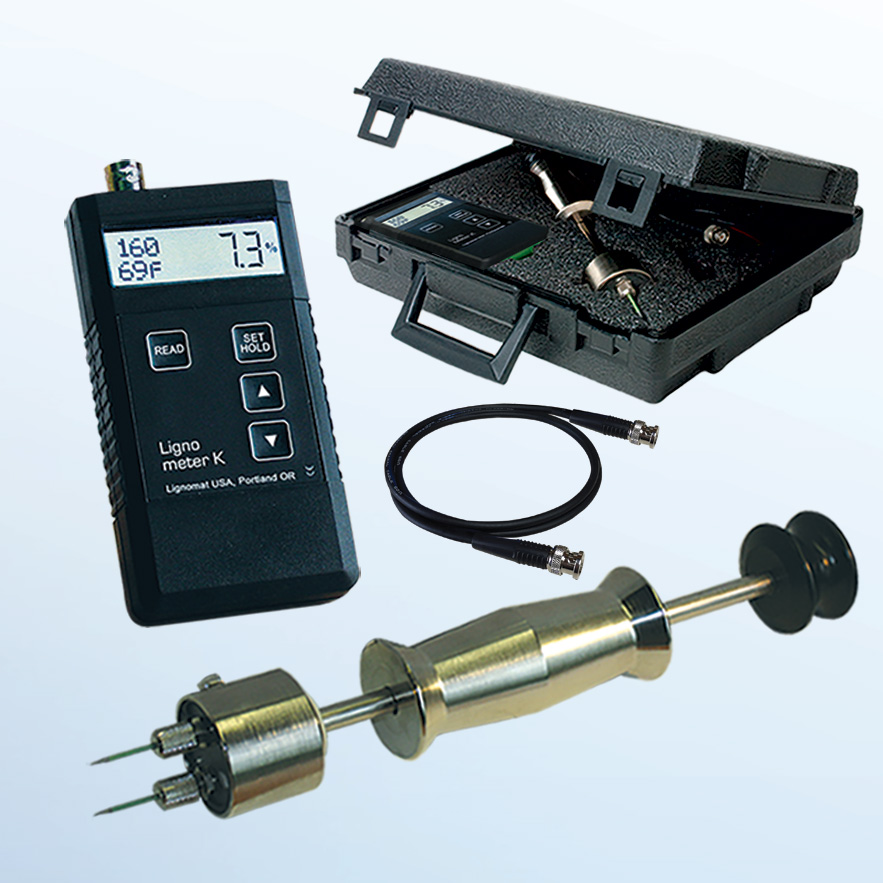The Ultimate Overview to Moisture Meters: A Comprehensive Summary and Just How They Can Save You Money
In the realm of structure maintenance, building and construction, and different markets, the relevance of precisely determining moisture degrees can not be overstated. Wetness meters function as important devices in finding and monitoring moisture web content in materials, aiding in protecting against pricey damages and making certain the top quality of products. Comprehending the subtleties of different kinds of dampness meters, their applications, and the potential cost-saving benefits they supply can be a game-changer for companies and specialists alike. Uncovering how these tools can not only streamline procedures however additionally add to financial cost savings is a journey worth starting.
Kinds Of Moisture Meters
Numerous sorts of wetness meters are offered for different applications in numerous industries. One common type is the pin-type moisture meter, which gauges the electrical resistance in between two pins put right into a material. This kind is suitable for timber, drywall, and various other building materials. Pinless dampness meters, on the other hand, use electromagnetic sensor plates to check a larger area without triggering damage to the material's surface. These meters are suitable for rapidly examining moisture degrees in huge areas such as floors and walls.
Infrared wetness meters measure the thermal properties of a material to identify its moisture material non-invasively, making them useful for applications where pin or pinless meters might not be ideal. Comprehending the various kinds of wetness meters offered can aid markets select the most appropriate tool for their particular dampness dimension requirements.

Advantages of Making Use Of Moisture Meters

Additionally, utilizing wetness meters can lead to enhanced power performance. In agricultural settings, wetness meters play a critical function in maximizing crop yields by enabling farmers to keep an eye on soil moisture degrees and make educated watering choices.
Exactly How to Pick the Right Moisture Meter
Selecting the proper wetness meter entails considering crucial elements such as material compatibility, dimension variety, and calibration precision. When selecting a dampness meter, it's vital to make certain that the meter appropriates for the certain material you will certainly be screening. Various materials have differing electric homes that can influence wetness analyses, so picking a meter made for your material is essential for accurate results. Additionally, think about the measurement range of the wetness meter. Guarantee that the meter can detect wetness levels within the variety needed for your applications. Calibration accuracy is another important variable to remember (Moisture Meter). Choose a dampness meter with trusted calibration to make certain constant and exact readings. Some meters may need periodic calibration changes, so recognizing the calibration procedure is necessary. By meticulously assessing these factors, you can pick a dampness meter that meets your needs and provides exact dampness measurements for your jobs.
Proper Techniques for Moisture Meter Use
To make sure precise wetness readings and take full advantage of the performance of a moisture meter, utilizing proper techniques is vital. When utilizing a pin-type dampness meter, insert the look at here pins or probes into the product being tested until they make full contact. Guarantee the pins are perpendicular to the surface area to obtain one of the most accurate analysis. For pinless wetness meters, hold the browse around here gadget level against the product and move it gradually to cover the whole location for an average reading. It's crucial to calibrate the dampness meter according to the product being checked to boost precision. Take multiple analyses across the surface area and typical them out for a much more trusted result. Furthermore, make certain that the material being evaluated is accommodated to the environment to stop skewed readings. Normal upkeep of the wetness meter, such as cleaning up the pins or sensing unit, is likewise essential to ensure constant and exact readings. By complying with these proper techniques, customers can rely upon their wetness meter to give trustworthy moisture degrees, helping in avoiding pricey damage or making sure quality in different applications.

Cost Cost Savings With Moisture Meter Applications
Exactly how can the strategic usage of moisture meters bring about significant price savings across different sectors? Dampness meters play an important duty in cost financial savings by preventing possible damage and making sure quality assurance in different industries. In the agriculture sector, moisture meters aid in identifying the optimum time for harvesting plants, avoiding excess or over-drying wetness that can impact the end product's high quality. This exact monitoring aids farmers stay clear of unnecessary losses and maximize their yield.

Moreover, in the food handling market, wetness meters are important for keeping an eye on item high quality and ensuring compliance with safety and security laws. By precisely measuring wetness content in food products, producers can prevent spoilage, preserve freshness, and decrease waste, leading to considerable price financial savings. Generally, the tactical application of wetness meters is an important financial investment that can lead to significant cost decreases and improved effectiveness across various markets.
Conclusion
In verdict, dampness meters are important devices for discovering and determining dampness degrees in numerous products. By using the right dampness meter and adhering to appropriate methods, individuals can successfully stop pricey problems triggered by excess dampness.
Moisture meters serve as essential tools in spotting and monitoring moisture content in products, assisting in avoiding costly problems and making certain the quality of products. Infrared moisture meters determine the thermal residential or commercial properties go to these guys of a material to establish its wetness web content non-invasively, making them valuable for applications where pin or pinless meters might not be appropriate.Wetness meters supply vital advantages in properly assessing and keeping track of dampness levels in diverse products and environments. In farming settings, moisture meters play a vital role in enhancing crop returns by allowing farmers to keep an eye on soil moisture levels and make notified irrigation choices.In verdict, dampness meters are important devices for finding and determining dampness degrees in numerous products.